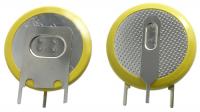Hello. I have a problem because I have to replace the used 3V CR2450 battery, which is soldered to the plates. Can I boldly desolder it and solder a new one? I am a beginner and have no idea about such things. Tin melting temperature is about 180-200 degrees, is there a risk of soldering?






